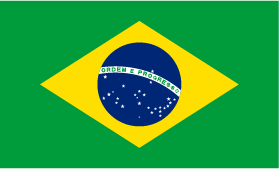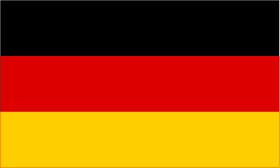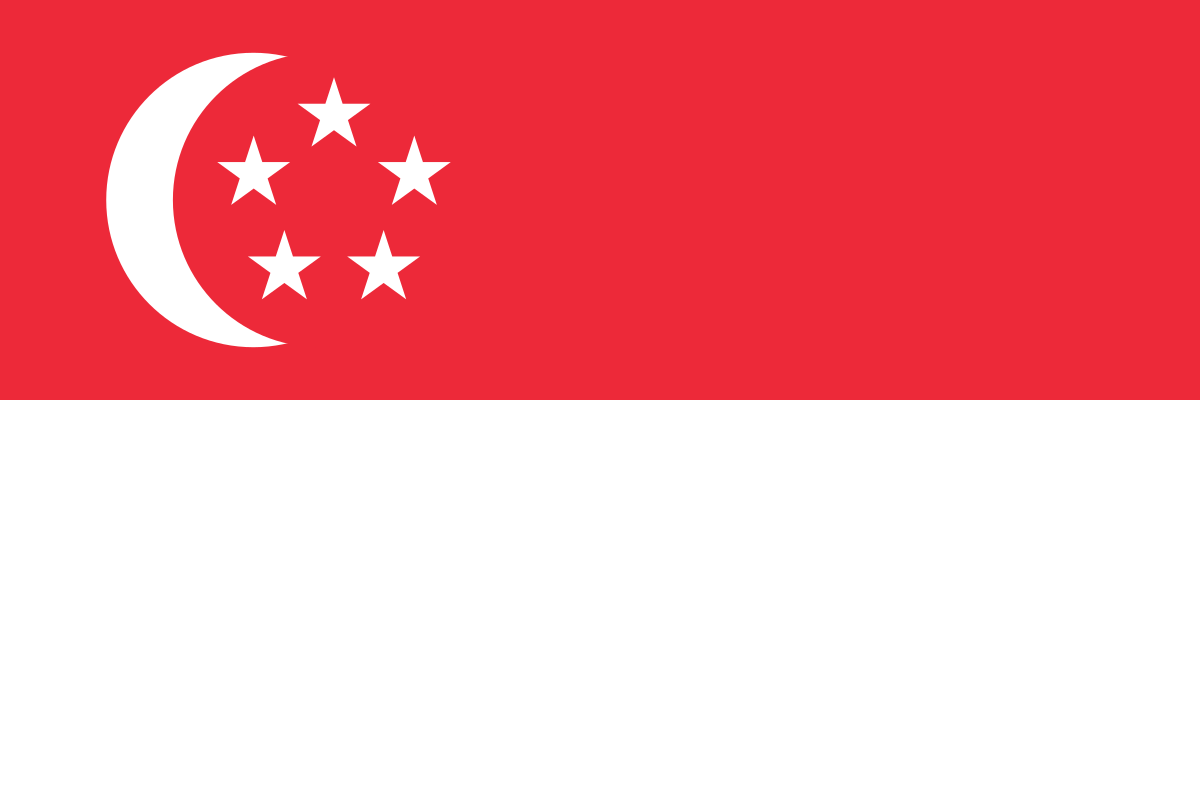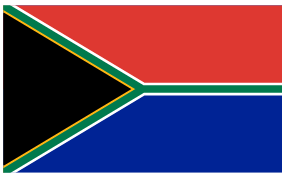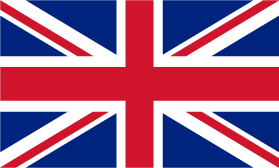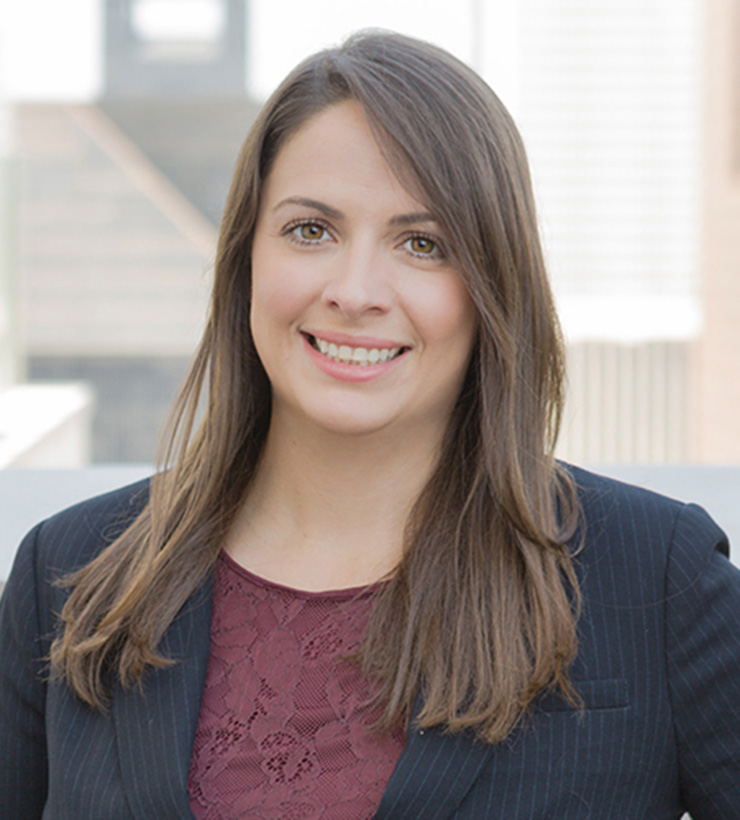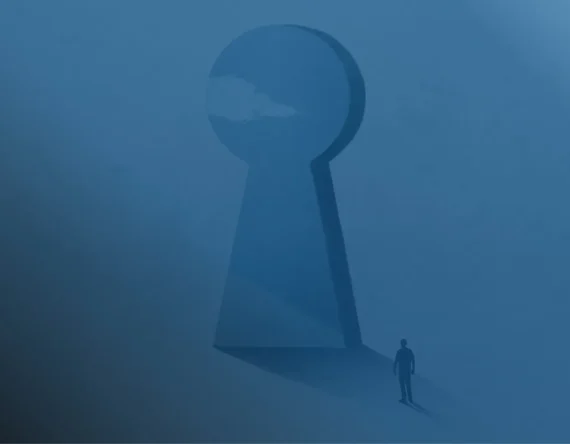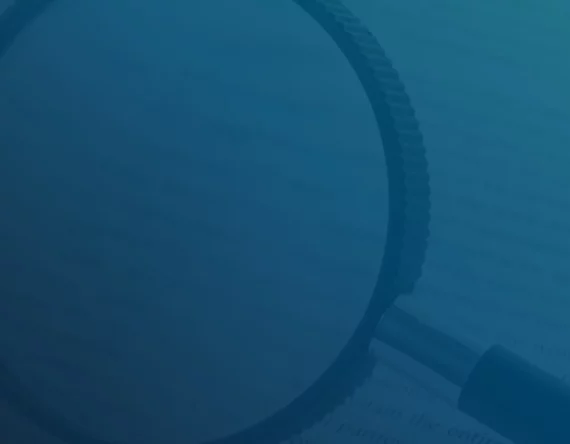I. ECOFACTOR V. GOOGLE
A jury in the U.S. District Court for the Western District of Texas found that Google infringed an EcoFactor patent and awarded EcoFactor damages.1 Following trial, Google appealed on several grounds including the denial of Google’s motion for a new trial on damages, arguing that the opinion of EcoFactor’s damages expert was speculative and unreliable and should have been excluded from trial.2 The Federal Circuit issued a 2 to 1 decision affirming the verdict in June 2024. Subsequently, the Federal Circuit took the case en banc, reversing the verdict and remanding for a new trial.3
A. Federal Circuit Opinion (Majority)
The Federal Circuit addressed two categories of arguments raised by Google related to the per unit reasonable royalty damages opinion put forth by Ecofactor’s damages expert, which was determined based on a hypothetical negotiation framework.4
First, Google argued that the expert’s damages model was speculative and conclusory, “plucked . . . out of nowhere.”5 Described in the Federal Circuit opinion, EcoFactor’s expert relied on three license agreements that EcoFactor entered into with third parties for its entire patent portfolio.6 “Each license agreement provided in a whereas clause that the licensee would pay EcoFactor a lump sum amount ‘set forth in [each agreement] based on what EcoFactor believes is a reasonable royalty calculation of [$X] per-unit for . . . estimated past and [] projected future sales of products accused of infringement in the Litigation.”7 The opinion also noted EcoFactor’s expert’s reliance on the testimony of EcoFactor’s CEO regarding the agreements, as well as an email chain between EcoFactor and one of the third parties, that mentioned the rate.8 Google argued that there was no evidence indicating that the parties to the three license agreements actually applied the royalty rate to reach the lump sum listed in each agreement.9 However, the majority opinion concluded that “[h]ow much weight should be given to the provisions in the license agreements, including whether they are ‘self-serving’ as Google claims, and the [] email is a question for the jury.”10
Next, Google argued that the damages opinion should have also been excluded for lack of comparability and apportionment.11 Specifically, Google argued that “the three license agreements were for Ecofactor’s entire portfolio and [EcoFactor’s expert] failed to account for the value of the [asserted] patent within that portfolio.”12 Described in the opinion, the record indicated that two of the agreements listed the asserted patent among the seven patents asserted against each respective third-party.13 The third agreement did not list the asserted patent, though the damages expert relied on technical opinion that four others that were listed covered the same interrelated technologies.14
The expert also acknowledged that all three agreements cover patents that were not asserted in the underlying litigations with the third parties, and that at the hypothetical negotiation Google would argue the rate listed in the agreement should be decreased because the license agreements included EcoFactor’s entire portfolio.15 Offsetting that consideration, however, he also noted that “the three license agreements reflect a settlement and thus the $X royalty rate reflects a risk that EcoFactor’s patents would be found not infringed or invalid. [] According to [EcoFactor’s expert], this consideration would not be present at the hypothetical negotiation between EcoFactor and Google, since the assumption is that the [asserted] patent was infringed and valid. [] As a result, this point would place upward pressure on the negotiated rate.”16 The opinion also noted the expert’s reliance on Google profit and survey data, upon which he based an opinion that the profit per unit that could be attributed to the asserted patent was more than double the royalty rate listed in the third-party agreements.17 The Federal Circuit concluded that the expert’s damages opinion “relied on sufficiently comparable licenses and his opinion sufficiently apportioned the value of the [asserted] patent for the issue to be presented to the jury.”18
B. Federal Circuit Opinion (Dissent)
Circuit Judge Prost dissented from the majority opinion related to Google’s motion for a new trial on damages.19 With respect to Google’s first argument, the dissent agreed with Google and noted that the expert’s “[$X] rate rests on EcoFactor’s self-serving, unilateral ‘recitals’ of its ‘beliefs’ in the license agreements. These recitals are not only directly refuted by two of those same agreements; they also have no other support (e.g., sales data or other background testimony) to back them up.”20 The opinion later stated, “[o]n this record, it’s impossible to establish that these lump-sum payments were calculated using any royalty rate, let alone the specific $X rate,” and “[a]t bottom, all we have are the recitals of one party’s ‘beliefs’ contradicted by mutually agreed upon contractual language by both parties. That’s not enough under our law.”21
As to Googles second argument, the dissent again agreed with Google and noted that the $X rate includes the value of other patents.22 EcoFactor’s expert “failed to account for the impact of the specific remaining patents in EcoFactor’s portfolio, other than by referencing a generic ‘downward pressure.’ Neither [the damages expert] nor [the technical expert] tied this ‘downward pressure’ to the specific non-asserted patents, and [EcoFactor’s CEO] affirmatively testified that EcoFactor’s practice was to use the same $X rate regardless of the number of patents.”23
C. En Banc Rehearing
In September 2024, the U.S. Court of Appeals for the Federal Circuit granted Google’s petition for an en banc rehearing and vacated its prior opinion.24 On May 21, 2025, the Federal Circuit issued an opinion reversing its earlier panel decision on damages and remanding the case for a new trial on damages.25 As of the date of this paper, the underlying proceedings have been stayed pending Patent Trial and Appeal Board proceedings.26
The en banc opinion does not address Google’s second argument related to apportionment.27 Regarding Google’s argument related to the sufficiency of the evidence relied upon by EcoFactor’s expert, the Court discussed the application of Federal Rule of Evidence 702, which “governs the admissibility of expert testimony,” and Daubert v. Merrell Dow Pharmaceuticals, Inc., 509 U.S. 579.28 The Federal Circuit noted that, “In 2023, Rule 702 was amended to clarify that the proponent of expert testimony bears the burden of establishing its admissibility and to emphasize that an expert’s opinion must stay within the bounds of reliable application of the expert’s basis and methodology.”29 Referencing the Advisory Committee notes to the 2023 amendment, the Court states,
“[t]he Advisory Committee explained that ‘[j]udicial gatekeeping is essential’ to ensure an expert’s conclusions do not ‘go beyond that the expert’s basis and methodology may reliably support.’ Determinations of admissibility, which fall within the gatekeeping role of the court, are separate from determinations of weight and credibility, which are within the province of the jury in a jury case.”30
The Federal Circuit discussed the terms of the licenses relied upon by EcoFactor’s damages expert, including specifically the “whereas” clauses that included per unit royalty rates.31
“The plain language of the license agreements does not support [the expert’s] testimony that [these licensees] agreed to pay the $X per unit royalty rate. In fact, [two of the] licenses expressly disavow it. The ‘whereas’ recital of each license provides no indication that the licensees agreed to pay the $X rate or shared EcoFactor’s belief that $X constituted a reasonable royalty.”32
The Court clarified that the licenses are relevant to a reasonable royalty and that the whereas recitals state EcoFactor’s belief that $X is a reasonable royalty, which could be relied upon as an indicator of what it was willing to accept for a license to its patent portfolio. However, it also noted that a reasonable royalty analysis requires consideration of both the “amount that a willing licensor would have accepted” and the “amount that a willing licensee would have paid” for the patent license.33
“The licenses therefore do not, individually or in combination, provide support for [the expert’s] testimony that the licensees agreed that $X was a reasonable royalty. The analysis does not usurp the province of the jury, nor does it involve this court deciding disputes of fact. It involves the gatekeeping function of the court to ensure that there are sufficient facts or data for [the expert’s] testimony that the licenses agreed to the $X royalty rate.”34
The Federal Circuit also discussed the testimony from EcoFactor’s CEO indicating that the lump sums reached in the comparable licenses were calculated by multiplying each licensee’s past and projected future sales by the $X rate.35 The Court noted that the CEO admitted he did not have access to sales information for the licensees and he did not reference any market data for this information.36 Notably, there were underlying disputes before and during trial concerning whether the CEO or the expert relied upon advisors who had access to the licensees’ actual or projected sales, but the majority determined any such issues were not preserved for appeal.37
Ultimately describing his testimony as “an unsupported assertion from an interested party,” the court determined that
“[h]is testimony referenced no evidentiary support. It did not include actual, projected, or even estimated sales figures. He relied entirely on his asserted ‘general understanding of the space,’ [citation omitted] without ever expanding how a general understanding informed him as to the missing sales data. . . His testimony cannot provide a sufficient factual basis for [EcoFactor’s expert] to provide a reliable opinion that the licensees agreed to pay the $X rate.”38
Based on these factual deficiencies, the Court later reiterated, “[t]here can be no doubt that this evidence fails to provide ‘good grounds’ for [the expert’s] testimony regarding the licensees’ agreement to pay $X per unit.”39
II. RECENT DECISIONS APPLYING ECOFACTOR
Since the Federal Circuit’s opinion was published in May 2025, several courts have written opinions referring to this decision for issues related to the admissibility of expert testimony. For example, opinions have referenced EcoFactor for issues related to the admissibility of both technical expert and damages expert testimony, including a Federal Circuit opinion related to the admissibility of damages expert testimony.
A. Technical Expert Application: Labcorp Corp. v. Natera
Labcorp filed suit against Natera in the U.S. District Court for the District of Delaware alleging infringement of three U.S. patents related to sequencing assemblies.40 On June 5, 2025, the Court denied Natera’s motion to exclude the opinions of Labcorp’s technical expert for failing to apply the Court’s claim constructions.41 In describing the applicable legal standard, the Court referenced EcoFactor regarding Rule 702, stating, “[i]n 2023, Rule 702 was amended to clarify that the proponent of expert testimony bears the burden of establishing its admissibility and to emphasize that an expert’s opinion must say within the bounds of a reliable application of the expert’s basis and methodology.”42
The Court also referenced EcoFactor for the proposition that “[d]eterminations of admissibility, which fall within the gatekeeping role of the court, are separate from determinations of weight and credibility, which are within the province of a jury in a jury case.”43 Subsequently, on June 26, 2025, the Court also denied the plaintiff’s motion to exclude Natera’s technical expert testimony related to invalidity and infringement.44 Here again, the Court referenced the same passages from EcoFactor in its description of applicable legal standards.
B. Technical Expert Application: SmartSky v. Gogo
SmartSky filed suit against Gogo in the U.S. District Court for the District of Delaware alleging infringement of several patents related to air-to-ground internet service.45 On August 7, 2025, the Court issued an order addressing several summary judgment motions related to issues including invalidity and infringement.46 In its discussion of indefiniteness, the Court described Gogo’s challenges to the opinions of SmartSky’s technical expert, including a factual dispute about the meaning of a claim term.47 Citing EcoFactor, the Court determined that there was a factual dispute over the term, and that Gogo was free to cross-examine SmartSky’s technical expert “and the jury will resolve the dispute.”48
C. Damages Expert Application: Super Lighting v. CH Lighting
Super Lighting filed suit against CH Lighting in the U.S. District Court for the Western District of Texas alleging infringement of three patents related to LED tube lighting.49 CH Lighting conceded infringement of two patents, and a jury found the third patent infringed and awarded damages.50 Following trial, CH Lighting appealed several district court orders, including the denial of CH Lighting’s motion for a new trial on damages, arguing that the testimony of Super Lighting’s damages expert was legally insufficient to prove damages.51
On July 28, 2025, the Federal Circuit issued an opinion addressing, among other things, arguments raised by CH Lighting relating to admissibility of the Super Lighting’s damages expert testimony under Rule 702.52 Specifically, “CH Lighting argued that [the expert’s] testimony was not reliable and that she failed to apportion the license fees to account for licensed patents that were not asserted.”53 At trial, the expert had relied on two prior Super Lighting portfolio licenses with third parties to determine a per unit royalty rate for the hypothetical license.
The expert opined that a portion of the patents within the portfolio were comparable to the asserted patents, and that those comparable patents drove the negotiations for the third-party licenses she relied upon.54 Specifically, the Federal Circuit noted that the expert:
“…observed that a ‘subset of patents’ comparable to the three asserted patents ‘drove th[e] negotiation’ with [one of the third party licensees] [citation omitted], based solely on a document sent from Super Lighting to [that licensee] alleging that [the licensee] might be infringing 15 of Super Lighting’s patents [citation omitted], and similarly, that patents comparable to the asserted patents were ‘very important patents to Super Lighting’s portfolio’ during the [negotiations with the other third party licensee] [citation omitted], based solely on discussions with Super Lighting personnel.”55
Referencing EcoFactor, the Federal Circuit stated, “[w]e recently considered the issue of patent damages experts’ reliability under Rule 702 in EcoFactor, in which we explained that testimony as to a hypothetical negotiation that is based on prior licenses must be supported by sufficient facts or data.”56 The Federal Circuit noted a lack of explanation in the District Court’s denial of CH Lighting’s motion and the opinion stated that the court “should have conducted a more exacting analysis of [the expert’s] testimony.”57 As a result, the Federal Circuit remanded the case for a new trial on damages and instructed the District Court to “consider the reliability of [the expert’s] testimony in light of EcoFactor, with a particular focus on whether ‘she reasonably rel[ied] on [the] kinds of facts or data in forming an opinion’ that would be reasonably relied upon by an expert in her field.”58
With respect to the apportionment argument raised by CH Lighting, the Federal Circuit also noted that it had previously explained that a damages expert must apportion among licenses, and that “expert testimony should be excluded when it fails to allocate license fees among the licensed patents covered by an agreement [citation omitted].59 In instructing the trial court to “consider whether Super Lighting properly apportioned damages,” the Federal Circuit clarified that, “[i]f there is a problem with [the expert’s] damages testimony, her testimony cannot be justified simply because she made a series of blanket upward and downward adjustments based on such factors as the level of competition between the parties and the changes in the price of LED tubes,” and it suggested that “these concerns may form the basis for a Daubert motion.”60
III. ALTRIA V. REYNOLDS
A jury in the U.S. District Court for the Middle District of North Carolina found that Reynolds infringed three Altria patents related to electronic vapor device technology and awarded $95 million in damages.61 Following trial, Reynolds appealed several district court orders, including post-trial motions for judgment as a matter of law and a new trial on damages, arguing “that the jury’s damages award stems from legal error.”62 The Federal Circuit affirmed 2-1 (partial dissent by Judge Bryson).63
A. Federal Circuit Opinion
The Federal Circuit issued a decision in December 2024 (prior to issuing the EcoFactor opinion discussed above) affirming the district court’s order.64 The opinion addresses two arguments raised by Reynolds related to the per unit reasonable royalty damages opinion put forth by Altria’s damages expert. 65
First, Reynolds argued that “the jury lacked sufficient evidence to conclude that the licenses at issue used a 5.25% royalty rate.”66 Described in the Federal Circuit opinion, Altria’s expert relied in part on a lump sum license to a third party’s patent portfolio.67 Reynolds contended that Altria relied on the wrong projection in converting a lump sum to a running royalty (and use of other projections would have been more applicable), and that at most, the evidence supported a lower royalty rate (3.6% or 2.1%).68 The Federal Circuit noted that “Reynolds did not challenge this portion of Altria’s damages expert’s testimony under Federal Rule of Evidence 702. Thus, we do not view Reynolds as challenging the particular methodology Altria’s expert employed. Instead, we simply review this as a challenge to the evidentiary basis of the 5.5% royalty rate.”69 The court stated,
“[i]n the face of this competing testimony, and again in the absence of an objection from Reynolds on the methodology that Altria’s expert used to calculate a per-unit rate in a comparable license, we conclude that the jury could decide for itself which royalty rate best fit the facts of the case.”70
Judge Bryson’s dissent takes exception to the majority’s determination that the effective rate was a fact issue for the jury. Rather, he observes that the 5.25% rate is only supported based on projections from 2017-2023 whereas the license continues through 2030, “so the expert’s testimony on the…license provides no support for the 5.25% royalty figure adopted by the jury.”71
Second, “Reynolds argue[d] that Altria’s damages expert offered unreliable apportionment testimony and thus that the district court erred by not excluding it under Federal Rule of Evidence 702 . . .”72 However, according to the Federal Circuit, “[h]ere, Altria offered a detailed accounting for the differences in the economic and technological circumstances of the contracting parties and explained how it valued Altria’s patents.” The Court described the technical analysis of the third-party’s licensed patent portfolio and comparison to Altria’s asserted patents performed by Altria’s technical expert as well as the analysis of “similarities and differences in licensed products and economic circumstances between [the third-party license] and the hypothetical negotiation to value Altria’s patents” performed by Altria’s damages expert.73 According to the Federal Circuit, “Altria’s expert also, based on the technical expert’s testimony, concluded that they importance of the patented features to [the third-party licensee] was similar to the technical importance of the patented features from Altria’s patents to [Reynold’s accused product].”
The Federal Circuit reasoned that, “[w]hat Reynolds’s challenges amount to . . . are disagreements with the particular adjustments that Altria’s damages expert made to the royalty rate in the [third-party] license. While our law requires Altria to ‘account for differences in the technologies and economic circumstances of the contracting parties, [citation omitted] we do not require any specific adjustment to a royalty rate based on those differences.”74
B. Reynolds Petition for Writ for Certiorari
On August 7, 2025, Reynolds filed a Petition for Writ of Certiorari asking the Supreme Court to review the Federal Circuit’s decision. Specifically, Reynolds asked the Supreme Court to consider two questions.75
First, “[d]oes the Federal Circuit’s judicially created ‘built-in apportionment’ exception, which allows patent owners to use unrelated prior licenses to prove damages without providing ‘evidence tending to separate or apportion’ the patent’s contribution, violate Garretson v. Clark’s requirements that apportionment ‘must in every case’ be shown?”76 According to the petition, Reynolds argues that “built-in apportionment” has morphed into a “legal doctrine that allows plaintiffs to use so called ‘comparable licenses’ to prove apportionment as a matter of law, without further analysis.”77
According to Reynolds, “the Federal Circuit permitted Altria to use ‘built-in apportionment’ to obtain a . . . judgment for the alleged use of Altria’s patented invention in Reynolds’s [accused products]. Altria secured this sum by pointing to two license agreements to entirely different patents of a non-party and claiming that their comparability to the hypothetical ‘reasonable royalty’ that Altria and Reynolds would have negotiated satisfied the Federal Circuit’s ‘built-in apportionment’ exception. Altria undisputedly did not make any adjustment to the claimed rates of the prior licenses to account for apportionment. As a result, Altria was allowed to obtain damages on technologies it never patented, and on profits resulting from Reynolds’s contributions, over which Altria obviously holds no patent rights.”78
Reynolds argues that comparability of a license does not resolve the duty to apportion: “[s]o a party seeking to use a comparable prior license to prove damages must take the additional step of adjusting the rate reflected in that license, including by accounting for other patents in the prior license as well as other non-infringing features in the accused product.” “Moreover, if the previous agreement also licenses other patents, the value of those patents must be apportioned out of the rate.”79
Second, and alternatively, Reynolds asks the Supreme Court to consider whether the judgment in this case should be vacated and the case remanded for application of the precedent set in EcoFactor. The petition notes that the Federal Circuit’s decision in this case was reached six months prior to its decision in EcoFactor, and at that time the Federal Circuit determined that “the district court had properly applied Federal Rule of Evidence 702 and Daubert, even though no reliable testimony supported the application of built-in apportionment.” “Reynolds challenged the admissibility of Altria’s damages and technical experts’ testimony on an unapportioned rate for, among other things, failing to account for [the accused product’s] non-infringing features and attributing the value of conventional features to Altria’s patents.”80
According to Reynolds, “because Altria’s technical expert offered only a ‘superficial recitation’ of the advantages of the claimed patented invention and failed to isolate the value of Altria’s patent over the prior art, his testimony was insufficient for admissibility. [citations omitted]. the approach adopted by the en banc Federal Circuit in EcoFactor, Altria’s expert did not have ‘good grounds’ for his testimony.”81
If you have any questions or would like to discuss this topic please reach out to Tiffany Lewis.
To receive StoneTurn Insights, sign up for our newsletter.
—
[1] EcoFactor, Inc. v. Google LLC, 104 F.4th 243, 248 (Fed. Cir. 2024).
[2] Id. at. 247, 248.
[3] EcoFactor, Inc. v. Google LLC, 137 F.4th 1333, 1336.
[4] EcoFactor, Inc. v. Google LLC, 104 F.4th 243, 251.
[5] Id. at 252.
[6] Id. at 252 and 254.
[7] Id.
[8] Id. at 252-253.
[9] Id. at 253.
[10] Id. at 254.
[11] Id.
[12] Id.
[13] Id. at 255.
[14] Id.
[15] Id.
[16] Id.
[17] Id. at 254-255.
[18] Id. at 256.
[19] EcoFactor, Inc. v. Google LLC, 104 F.4th 243, 257.
[20] Id.
[21] Id. at 259.
[22] Id. at 257 and 260.
[23] Id. at 261.
[24] EcoFactor, Inc. v. Google LLC, 115 F.4th 1380.
[25] EcoFactor, Inc. v. Google LLC, 137 F.4th 1333, 1336.
[26] EcoFactor Inc. v. Google, LLC, 6:20-cv-75 (WDTX).
[27] EcoFactor, Inc. v. Google LLC, 137 F.4th 1333.
[28] Id. at 1338-1339.
[29] Id. at 1339.
[30] Id. at 1339.
[31] Id. at 1341-1343.
[32] Id. at 1343.
[33] Id. at 1343.
[34] Id. at 1343.
[35] Id. at 1343-1345.
[36] Id. at 1344.
[37] Id. at [slip pp. 18-19].
[38] Id. at 1344.
[39] Id. at 1346.
[40] Lab’y Corp. of Am. Holdings v. Natera, Inc., No. 21-669 and 21-1635 (D. Del.) (reported at 2025 U.S. Dist. LEXIS 107388).
[41] Id.
[42] Id.
[43] Id.
[44] Lab’y Corp. of Am. Holdings v. Natera, Inc., No. 21-669 and 21-1635 (D. Del.) (reported at 2025 U.S. Dist. LEXIS 122087).
[45] SmartSky Networks, LLC v. Gogo Bus. Aviation, LLC, No. 1:22-cv-266 (D. Del.) (reported at 2025 U.S. Dist. LEXIS 151928).
[46] Id.
[47] Id.
[48] Id.
[49] Jiaxing Super Lighting Elec. Appliance, Co., Ltd. V. CH Lighting Tech. Co., Ltd., No. 2023-1715 (Fed. Cir.) (reported at 2025 U.S. App. LEXIS 18681, 1 and 3).
[50] Id. at 1-2.
[51] Id. at 9.
[52] Id. at 20.
[53] Id. at 22.
[54] Id. at 22.
[55] Id. at 22.
[56] Id. at 23.
[57] Id. at 22-23.
[58] Id. at 24-25.
[59] Id. at 25.
[60] Id. at 26.
[61] Altria Client Servs. LLC v. R.J. Reynolds Vapor Co., No. 23-1546 (Fed. Cir.) (reported at 2024 U.S. App. LEXIS 32165).
[62] Id. at 1-2 and 4.
[63] Id. at 1.
[64] Id. at 1 and 16.
[65] Id. at 4-5.
[66] Id. at 8.
[67] Id. at 9-10.
[68] Id. at 10-11.
[69] Id. at 8-9.
[70] Id. at 11-12.
[71] Dissent at 2.
[72] Id. at 12.
[73] Id. at 12-14.
[74] Id. at 14-15.
[75] Petition for Writ of Certiorari, R.J. Reynolds Vapor Co. v. Altria Client Servs. LLC, No. 25-158 (U.S. Aug.7, 2025).
[76] Id. at i.
[77] Id. at 3.
[78] Id. at 4.
[79] Id. at 21-22.
[80] Id. at 35.
[81] Id. at 36.
